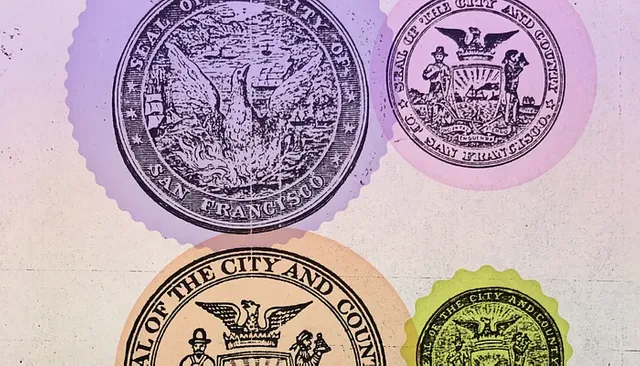
In 2017, I left my job as a UX designer at Google to work for local government.
A lot of people questioned my decision. Google is a dream job for many — the quintessential fun, well-paid workplace for super smart people. And aside from that, people were in disbelief that local government even employs product designers.
At the time, I didn’t feel confident sharing my reasons. After all, they were just my personal assumptions and hopes. Now that I’ve spent some time on the other side, I hope my experiences can encourage others considering this career change.
My introduction to civic tech
While I was at Google I had a unique opportunity to volunteer with the City and County of San Francisco through the CivicBridge program. For a month (plus a year of 20% time), my team of Googlers left behind our day jobs and went into work each day at the City’s offices.
I never could have learned so much about government without being fully immersed. I saw the culture and ways of working, the speed of work, how decisions are made and influenced. I learned about the types of problems that government has to solve, and the people who work on them. I saw how people were inspired by our modern software development practices, user centered design, and user research.
What’s more, I myself was inspired by City employees. They were motivated, eager, and excited. They had a vision of the future where technology could help them deliver critical services to the public.
I went back to my normal job at Google for 2 more years, but I didn’t forget this experience. When San Francisco formed a new Digital Services team within the Office of the City Administrator, I jumped.
Why I decided to work in government

- I wanted to work on things that are necessary
The services that government provides are often basic needs that the public must have access to. Sometimes they aren’t optional, and sometimes there aren’t alternatives in the market (or the alternatives might not work for all people). Government agencies exist to offer these. Utilities, marriage licenses, construction permitting, public records, transportation, immigration assistance, public health guidance — the list goes on.
At Google I worked on products like Google Wallet and Android Pay that helped people make payments in stores and online. While paying with phones was clearly the way the world headed, the work I was doing didn’t feel like it was going to meaningfully impact people’s lives. Our users were already able to pay for things, and we were attempting to make it a bit more efficient or enjoyable.
People rely on government services. Through user research as a designer in government, I have encountered people who only get internet access while at the public library. And people who dial 311 to have a human operator tell them when the next bus is coming.
This is pretty far from cutting-edge consumer technology. We certainly need industrious private sector companies to keep pushing things forward, but it’s not what I chose to spend my time on.
- I wanted a clearer focus on user needs
The products I designed at Google were launched internationally. I was designing for people in other countries, with cultures that I didn’t know anything about. It all felt disconnected from those people’s needs. We were trying to grow, but the purpose beyond that was unclear. It felt like we had a solution that was looking for a problem.
I wanted my work to be grounded in a foundation of what people actually need. In government, I found a place with few business or technology objectives. Instead there is a constant focus on user needs. We’re starting from “people need housing”, not “this technology is cool, how can we use it”.
- I wanted greater compassion and awareness of the people I design for
At Google, I had the infamous free lunch, thoughtfully designed offices, and stunningly themed holiday parties. I can’t even list out everything without sounding like a parody of tech company perks…But that life is not normal. Most of the people we were building products for did not have the same experience I was having. And I couldn’t shake the feeling that these perks felt empty if I didn’t also care about the work I was doing — my actual job.
Particularly at the local level, working in government helps me feel closer to my community. And part of what makes me a successful designer is understanding the needs and context of the people I am creating experiences for.
It also wasn’t until I volunteered on affordable housing that I realized what we must consider if we want our services to be available to everyone. The range of technical literacy, languages spoken, visual, mobility, and cognitive needs, stability, mental bandwidth, and internet access was simply not something I had been confronted with before as a designer. Often, the people who struggle to use technology are the people who need public services the most. Working in government, this is front of mind.
- I wanted to join a new and growing movement
Civic tech as an industry is still relatively new (especially in the context of a generally slow-moving, centuries-old institution where it’s not uncommon for employees to stay for their whole careers). I discovered a deep community of civic technologists from across the country, who are excited to make change. With that comes a sense that we are all in this together to try something new.
In my experience at a big tech company, there were fairly set work processes. Teams knew how to work with each other across disciplines to take an idea from concepts to designs to launching a feature.
But in government, the rules for building digital services aren’t set yet. Fewer government workers bring expectations from prior tech industry experience. Nor are strategies for software development (or its impact on policy) built into the organizational structure.
There’s much more opportunity to get involved in defining how work gets done, the shape of teams, and approach to work, even hiring practices. Digital service teams are still establishing best practices for bridging fast-paced tech hiring with a slower rule-laden environment. And perhaps more importantly, government has a strong value of fairness. So there’s space for us to think about how to do things equitably and inclusively— whether that’s hiring, team culture, or product development.
Which brings me to now…
These are the things that drew me to government, and for the most part, I found what I was looking for. Yes, change is often slow. There are many stakeholders with different ideas about what’s best. Political decisions sometimes impact the work, or we’re legally required to build something that is hard to use, or rarely used. But somehow there is still a common denominator of public interest, even if there are disagreements on how to do that.
What services can we offer to meet residents and businesses basic needs? Moreover, how do we make it usable for them? What policies will enable us to serve them? How do we ensure equitable access and transparency? Although you will find competing ideas on how to do these, when it all boils down, the goal of public service is still what’s driving.
It’s now nearly six years later, and I’m wrapping up my time as an employee of the City and County of San Francisco. These reasons and desires for joining government have not changed, and in fact they’ve proven true. Over time I’ve taken them for granted, and can’t imagine working somewhere where they aren’t the case.